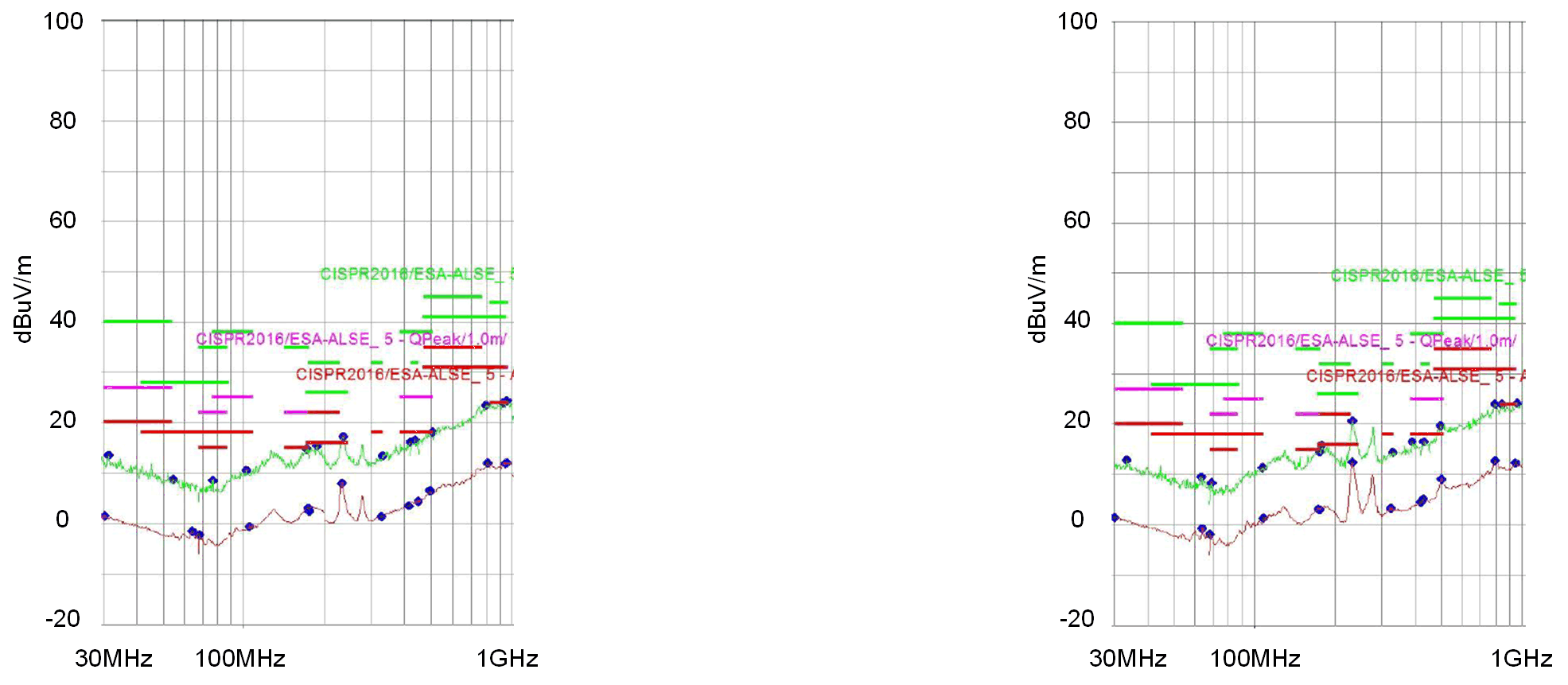SNVA964 June 2020 LP8866-Q1
2.2 Gate Resistor
The high frequency switching behaviors in SMPS bring the most noise in EMI test. For LED backlight driver with external MOSFET like LP8866-Q1, it’s able to slow the switching speed by increasing the value of external gate resistor R7. The downside of this approach is that the switching losses will be increased due to the longer turn-on and turn-off time. It is therefore important to select a gate resistor by trading off the EMI and thermal performance. The EMI measurement results with 15-Ω and 10-Ω gate resistors are shown in Figure 9 and Figure 10.

| (a) With 15-Ω external gate resistor | (b) With 10-Ω external gate resistor |

| (a) With 15-Ω external gate resistor | (b) With 10-Ω external gate resistor |